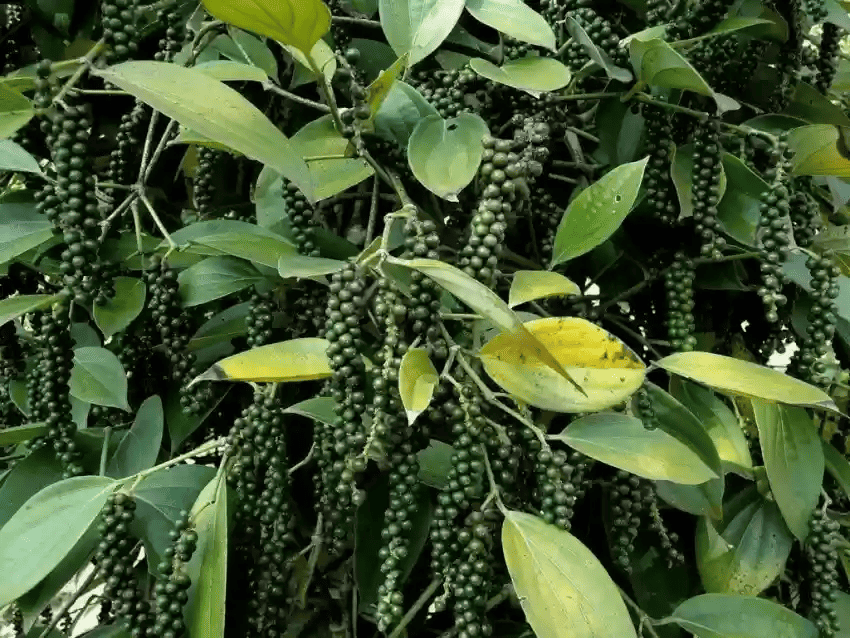
Black pepper thrives in warm and humid climates with well-distributed rainfall. The ideal temperature range is between 20°C to 30°C, and the annual rainfall should be around 1500 to 2500 mm. The soil should be well-drained, fertile, and slightly acidic with a pH of 6.0 to 7.0. Red loams and lateritic soils are generally considered ideal for black pepper cultivation.
There are many varieties of black pepper, each with its own unique flavor and aroma. Some of the popular varieties include:

Black pepper is usually propagated through cuttings or layering. Seeds can also be used, but they take longer to germinate and may not produce true-to-type plants.
Black pepper vines are climbers and require support to grow. Traditionally, they are grown on live trees such as mango, coconut, or arecanut. Alternatively, you can use poles or trellises for support. Space the plants 2-3 meters apart.
Black pepper requires regular fertilization for optimal growth and yield. Apply compost or well-decomposed manure at the base of the plants before the monsoon season. You can also supplement with a balanced fertilizer, such as NPK 10:10:10, applied three times a year.
Black pepper needs regular watering, especially during the dry season. However, avoid overwatering, as this can lead to root rot. Water the plants deeply at the base, avoiding the leaves.
Black peppercorns are ready to harvest when they are green and firm, but just starting to turn yellow. They are usually harvested by hand and sun-dried on mats. Once they are dry, the peppercorns can be threshed to remove the outer hull, revealing the black peppercorns that we know and love.
Black pepper is relatively resistant to pests and diseases, but some common problems include:
To control pests and diseases, use organic methods whenever possible, such as neem oil or garlic spray. If necessary, you can also use chemical pesticides or fungicides, but be sure to follow the label instructions carefully.
With proper care, black pepper farming can be a profitable and rewarding venture.